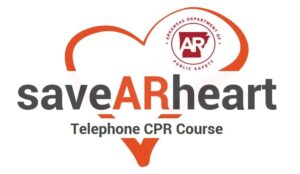American Heart Association
The American Heart Association Telecommunicator CPR (T-CPR) page states that each year an estimated 350,000 sudden cardiac arrest (SCA) events occur in the United States in an out-of-hospital environment. Almost all of these events result in a call for help to 911. Without quick intervention in the form of cardiopulmonary resuscitation (CPR) and defibrillation, death from SCA is certain.
One critical intervention strongly associated with survival is cardiopulmonary resuscitation (CPR) started by a bystander. When CPR begins prior to the arrival of emergency medical services (EMS) personnel, the person in cardiac arrest has a two to three-fold higher likelihood of survival. An effective way to ensure that CPR is provided quickly is for the emergency telecommunicators to provide instant instructions with telecommunicator CPR (T-CPR). T-CPR allows bystander CPR to begin – it works by keeping the brain and heart alive until EMS arrives to provide defibrillation and other vital interventions. T-CPR can assist the untrained caller as well as remind the CPR trained caller how to provide high-quality CPR.
Arkansas saveARheart Telephone CPR Course
The State of Arkansas provides free online training for T-CPR, the saveARheart Telephone CPR Course. Once the course is started, several CPR informational links and decision charts are available.

CPR LifeLinks
CPR LifeLinks is a national initiative to help communities save more lives through the implementation of telecommunicator and high-performance CPR programs.
According to the American Heart Association, only 46% of the 250,000 people who experience out-of-hospital cardiac arrest in the U.S. each year get immediate help before a professional arrives. In response to a recommendation by the National Academies, NHTSA brought together EMS and 911 stakeholders to create a comprehensive CPR program implementation toolkit for every 911 and EMS agency in the country.

